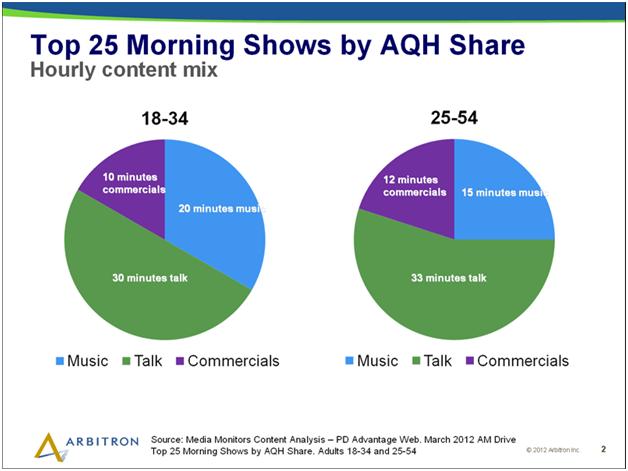On the one hand, I admire DJs and personalities who have a desire to be in the know when it comes to the ratings. After all, its their report card. But on the other, you have to worry that there’s a tendency to get so caught up in the gyrations of the ratings that it negatively impacts their performance.
 This ratings roller coaster is on display every Sunday night on HBO’s The Newsroom, the new Aaron Sorkin drama that takes viewers behind the scenes of a TV news show struggling to find its place in the changing world of broadcast journalism.
This ratings roller coaster is on display every Sunday night on HBO’s The Newsroom, the new Aaron Sorkin drama that takes viewers behind the scenes of a TV news show struggling to find its place in the changing world of broadcast journalism.
Jeff Daniels is the anchorman star, Will McAvoy, and the show focuses on his mental tug of war between doing a show that has substance or one that gets ratings.
And now an evil network executive, Reese Lansing, is in the mix. Every day, he and McAvoy take a secret walk around the block of their Midtown Manhattan skyscraper to have a little ratings chat. What happened last night with the numbers? What does it all mean? And what news stories and coverage treatment will drive the ratings higher on tonight’s show? It’s the same educated guesswork that takes place in radio stations all over America, every week or every month.
As Lansing explains to McAvoy’s boss, Charlie Skinner, “Will is a ratings whore.”
The insidiousness of the overnight ratings are part of this story, but if your station receives weekly PPM numbers, you are already on the fast track of rationalization, neuroses, and worry.
The battle is about whether content drives ratings or whether ratings drive content.
And to some degree, that’s what’s happening in every PPM market in the U.S. Should the format, the breaks, the personalities, the music, the teasing, and the amount of talk time be governed by what seems to work in PPM? Or should we be doing the best radio possible and let the ratings speak for themselves?
At the Morning Show Boot Camp last month, personality coach Angela Perelli talked about a key research finding from Arbitron’s savvy Jon Miller: “Two-thirds of the most successful morning shows in America talk for 30 minutes an hour.”
What they’re leaving out is the reality that not every personality show is good or compelling enough to pull off this high wire act. (By the way, note that commercial content for both demographics is 12 minutes or less. There are many broadcasters still in denial about the amount of commercials they cram in and their impact on ratings.)
It is our jobs as programmers, consultants, and managers to work with shows and personalities to bring out their best, put them in a position to win, help them create the best radio they can, and provide enough time and patience to see results. There’s is a balance of playing the PPM game but also doing radio that matters.
The drama on The Newsroom is probably not taken all that seriously by real TV news managers and personalities, but the struggle that the talent, programmers, and corporate staffers experience on the show is very real and thought-provoking.
Is your content driving ratings?
Or are your ratings driving content?
Are you a ratings whore?
- Media And Technology In 2025: Believe It Or Not! - April 18, 2025
- In Radio, You Just Never Know - April 17, 2025
- The Secret To Making A Great Podcast (And Great Radio) - April 16, 2025





This is really interesting stuff, Fred. What do you think DJs can do to make a compelling case to the, um, bean counters and program directors to do something that goes against PPM’s best practices, or that might not get a quick ratings bounce, but could be good for the development of a long-term product?
It’s a tough putt, Chris, and that’s why they call it “risk.” You need personalities you can trust and believe in – and not everyone fits that definition. As we talked during our interview, some of the most successful stations in PPM are breaking the rules, on the one hand. On the other, if everyone was B.J. Shea or Preston & Steve…or Howard Stern…it would be a whole different industry. Thanks for taking the time, Chris.